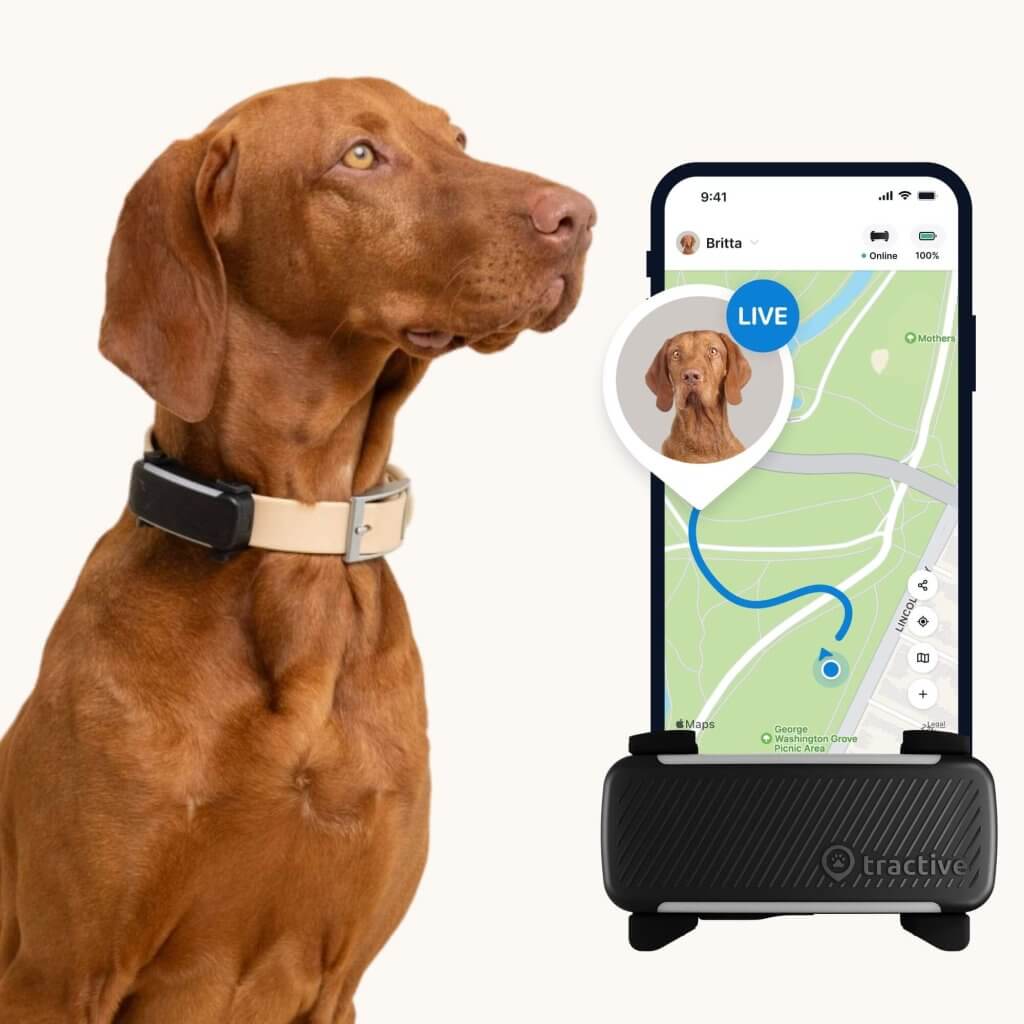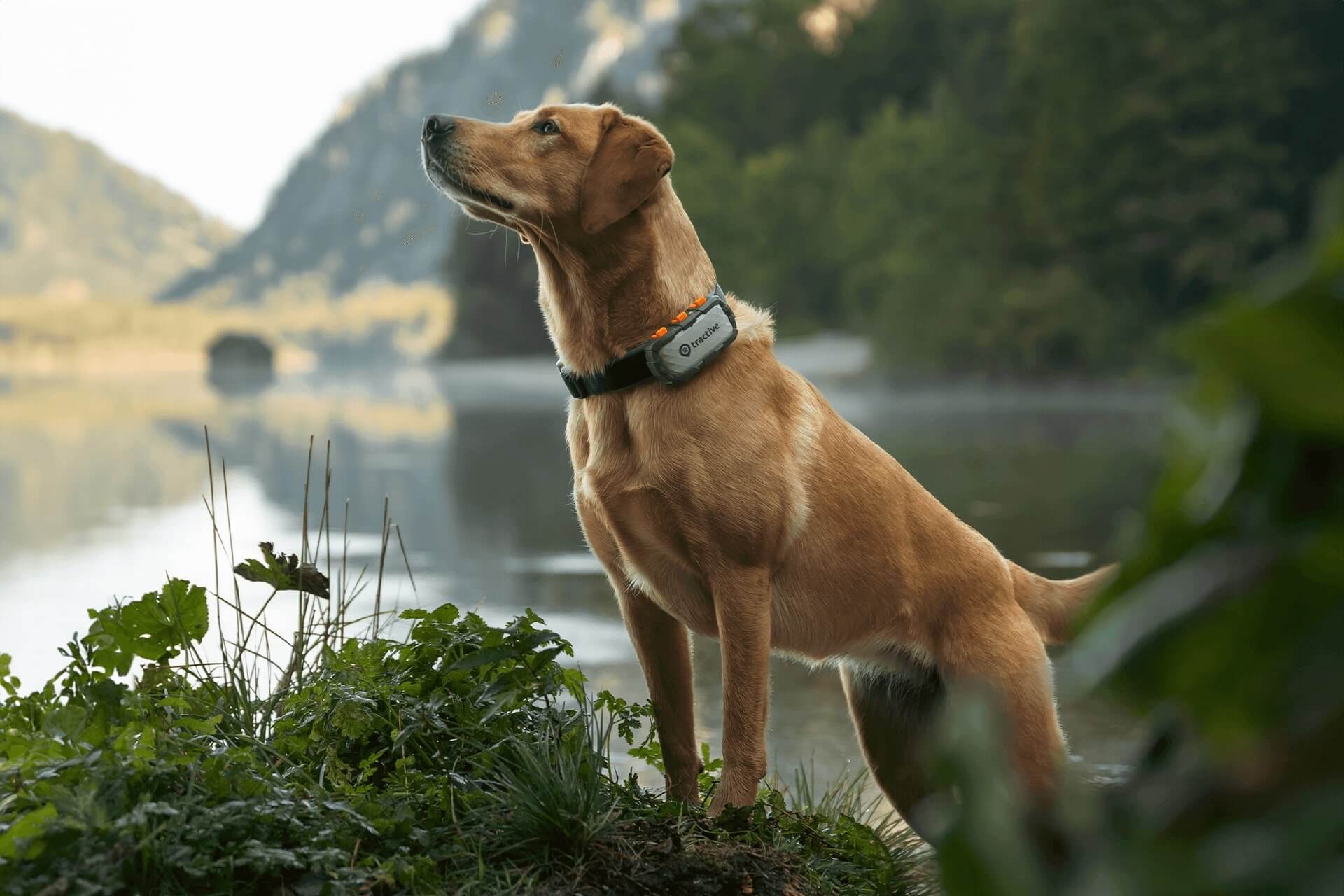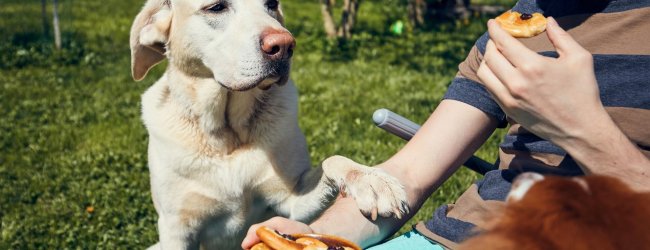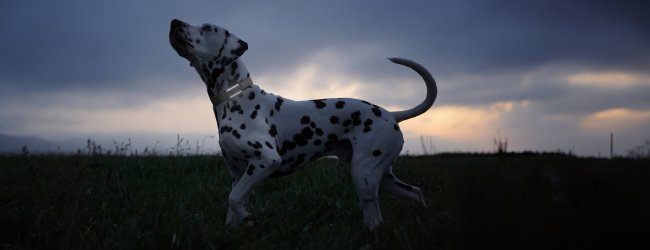7 Tips For Handling The Prey Drive In Dogs
All dogs have a prey drive - aka, the hunting instincts that lead them to chase down, stalk, and hunt prey. Which, for a regular pet owner, can be a bit of a nuisance. So here's how to handle it better - and keep your buddy safe.
No matter how much of a scaredy-pooch your buddy might be – they still have a prey drive. Aka, the hunting instinct that drives them to sniff out, chase down, and capture prey. Which could be smaller woodland animals, other pets, or even people! Prey drive in dogs is also a prime reason why dogs run away – from home or if you’re out together. Here are some ways to redirect their natural energy and keep them out of harm’s way with a few practical steps. (Including using a smart dog tracker with real-time GPS tracking as an emergency measure.)
Key Takeaways
All dogs possess a natural prey drive, which shows up in behaviors like chasing and pulling on the leash.
An uncontrolled prey drive puts your dog at risk for dangers like getting lost, injured, or encountering harmful substances.
You can’t get rid of your dog’s prey drive. But you can manage it through consistent training, reinforcing your dog’s “good” behaviors, and investing in a solid recall.
A smart dog tracker with real-time GPS tracking can help you track them down in no time during an emergency – like if your dog’s bolted off into the woods.

Always know your buddy is healthy & safe
Read moreWhat is the prey drive in dogs?
The prey drive refers to any behavior or instinct related to hunting, chasing and capturing prey. Do all dogs have prey drive? Yes – but how strong it is can vary across individual dogs. It depends on their breed, temperament, and habits they’ve picked up. However, almost every dog has a natural tendency toward some predatory behavior. Which can often be a challenge for pet parents. (Cats have it too!)
Because…well, today, most dogs don’t really need to hunt to eat! Yet just the sound, scent or sight of a moving object can send them bolting off into the distance.
💡 A smart dog tracker with real-time GPS tracking can be a potentially life-saving emergency measure if your dog has a tendency to bolt after smaller animals. With just a glance at your phone, you can switch to LIVE mode and track your dog’s every step – as they make their every step – and intercept them before they run off too far or get into trouble.

Follow your dog anywhere
Get real-time location information, wherever they go. And find out when they try to make an escape, or just when they go somewhere they shouldn’t, with Virtual Fences.
What behaviors are linked to prey drive in dogs?
The prey drive can explain why your dog hunts, sniffs, or searches around, stalking, chasing, or even biting to grab or kill. Now if you’re a hunter or a dog sports competitor, these behaviors can definitely come in handy. But on the other hand, for most pet owners, the prey drive can be a challenging behavior to handle. It might look like your dog:
- Pulling on the leash while out on walks
- Chasing down smaller pets or even children
- Chasing after other runners if you’re out together
- Bolting off into the woods if you’re out hiking together
Different dog breeds also exhibit the prey drive differently. Left to their own devices, dogs with a strong prey drive might just chase anything that moves.
⚠️ All of these behaviors can be quite a nuisance over time – especially if your poor dog ends up picking a fight with the wrong predator, injured from a bear trap, get hit by a passing car, or even lost in the wilderness. Because for your dog, “prey” can even be leaves, sticks, toys, balls, insects…but even joggers at the park, cars, bikes, and even smaller animals (like your cat!)
Which dog breeds have a strong prey drive?
Dogs bred to hunt or herd generally have the strongest prey drives. In fact, some dogs (including Golden Labs and Retrievers) were selectively bred for years to sniff out, chase down, and capture prey. Dogs with strong prey drive do great at other work activities, like search and rescue or law enforcement. These include:
- Australian Shepherds
- Border Collies
- Terriers
- Hounds
- Retrievers
- Spaniels
- Pointers
- Beagles
- Malamutes
However, some group breeds which are not bred for hunting or herding, may also possess a strong prey drive – like Boxers or Huskies. Likewise, some water loving dog breeds won’t let a little water danger stop them from catching their prey, so be prepared to get wet on outdoor trips with these pooches!
How can I tame my dog’s prey drive?
Your dog’s prey dive is a natural, biological instinct that can never be fully suppressed. But while you can’t fully eliminate it, your dog can learn to control their prey drive, instead of following their instincts. Meaning a ton of training and impulse control – and these steps to help you reduce it, or at least control it better.
1) Figure out how your dog’s prey drive shows up
Step one: keep an eye out for how your dog’s prey drive tends to show up. For example, your dog might:
- Chase around moving objects, people, or other pets
- Stalk around smaller animals like squirrels or birds
- Herd around people or other pets
- Dig around your garden (in search of rodents)
By figuring out what behaviors your dog tends to get up to when the prey drive’s rearing its head, you can better discourage it. Or, on the other hand, reward them for “good” behaviors – like when they remain quietly by your side over bolting off after a squirrel at the dog park.
⚠️ Don’t forget: other dogs might have a stronger prey drive than yours. So keep your friends and loved ones informed – especially when you’re planning on pet play dates together.
2) Redirect your dog’s attention away from “prey“
On your daily walks or during playtime, keep an eye out for possible prey. If your dog spots something and begins to hunt, stalk or chase it, do not yell or scold your dog. This could actually aggravate them further and even encourage the chase. Instead, engage and distract your dog to shift their attention away from prey. Keep their favorite toys or a whistle around to keep them occupied. Likewise, keep eye contact with your dog to help them stay focused on you or an activity, rather than on a potential prey.
“It’s important to step in before your dog follows their prey drive. So always watch your dog for tiny signs and learn to read their body language. For example, while in training, make sure your dog is firmly leashed – so they’re less likely to run off at the slightest sight, sound, or smell.”
– Marina Selinger, UX designer at Tractive & licensed dog trainer
3) Reward your dog when they do behave
If you only give your dog “attention” – even if that’s by yelling – when they run off or chase a nearby bird or squirrel, they’re still going to learn that “running away = attention from you.” So they might even repeat this behavior just to get some attention! Your dogs won’t learn to control their prey drive from day one alone. So make sure you reward your dog plenty when they sit obediently by your side or get successfully distracted from prey. Keep treats around, be generous with pats and praise, or reward them with their favorite game. This way, you’ll be able to train a habit in your dog of following and obeying you, not their prey drive.
Read more: Clicker Training for Dogs: A Step-by-Step Guide to Positive Reinforcement
4) Be sure not to encourage the prey drive
Even if you aren’t actively raising your dog to hunt down prey, you might accidentally reinforce their prey drive if you aren’t mindful! For example, don’t encourage your pup to chase other animals in order to get them running (as a form of exercise). Your dog will like it, and it will become a habitual behavior. Eventually, your dog won’t be able to tell the difference between chasing a moving object in the backyard, or a moving object on the other side of the road. This way, your dog can pose a serious danger to both themselves and to others if they chase people on bicycles, motorized vehicles, or animals across the road.
5) Train your dog’s recall
Training your dog to come when called can actually save their life. In fact, when it comes to basic obedience training for dogs, one of the first and most important commands is how to get your dog’s attention. (Whether by calling their name, teaching them to return to you at a verbal command or a whistle.)
Having a reliable recall could save your dog’s life, and is the key to your dog’s safety. Because if you’ve trained them well enough to come when called, it could potentially override their instincts – and have them return to you.
“Just make sure to include some distractions while training. If your dog only has perfect recall when they aren’t otherwise distracted, that doesn’t mean they’re not still vulnerable to their own prey drive.”
– Marina Selinger, UX designer at Tractive & licensed dog trainer
6) Make sure your dog’s gotten enough exercise
A well-exercised dog will be less likely to have the energy to chase off after prey at the end of a long day. So keep your dog busy with healthy activities – including:
- Walking or running off-leash
- Swimming
- Climbing
- Digging
- Searching for treats
- Games like tug of war or a backyard agility course
Try and choose walking routes where prey animals aren’t likely to be present. It’s also best to walk your dog during daylight hours, i.e. dawn and dusk. Similarly, if your dog likes to chase cars, plan your walks away from roads. Also, make sure to check your local laws to ensure you’re walking them on a leash where they’re supposed to.
7) Plan ahead for your dog running off anyway
Even with all your planning and prep, your dog’s hunting instincts might still lead them run away. And even worse: your buddy may just get lost or wander off in the heat of their chase. Which is where it makes sense to plan ahead for an emergency. Aka, follow your dog’s every step in real-time – with a dedicated smart dog tracker with real-time GPS tracking.
For less than the price of a bag of dog food and a monthly fee lower than your Netflix subscription, the Tractive GPS:
- Works over any range
- Easily attaches to all standard dog collars or harnesses
- Sends you an instant escape alert if your dog escapes a “safe zone”
- Helps you warn other dog parents about wildlife-prone areas nearby

And the best part? The Tractive DOG XL Adventure edition is built with love for all the rough and tumble adventures your dog gets up to. Which means it’s 100% waterproof, built with bite-proof fiberglass-reinforced casing and a 30-day battery life. So you can run, hike, swim, outdoors your dog – with 100% peace of mind.
“I have used a Tractive tracker on my dog since adopting her from a rescue over 4 years ago. She has a very high prey drive. Whilst she has good recall under normal circumstances, if she gets on the trail of something she is inclined to disappear for short periods.
The tracker is an accurate way of keeping an eye on where she is and gives me great peace of mind. The tracking is reliable and I like to retrace our walk when we are safely back at home.”
– Laura Ibbs, GB (Source: Trustpilot)

This post was written by Marina Selinger, a licensed dog trainer and international agility competitor. She’s also mom to 3 high-energy Shelties and a Japanese Spitz. In her free time, you can find her walking her dogs, hiking, or in the middle of a high-speed training session.



